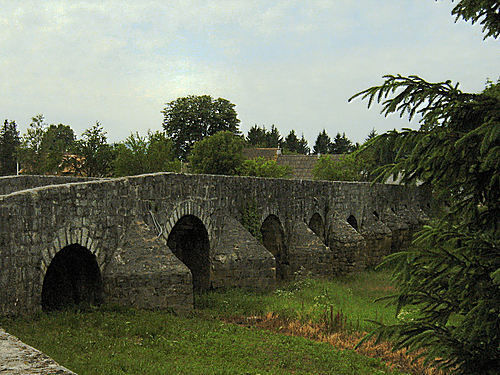Josipdol - Gateway to Lika
- Andrea Seifert

- Sep 10, 2016
- 3 min read
According to a legend, king and emperor Joseph II. Habsburg, son of Mary Theresa, was riding from the military town of Karlovac to the Senj harbour. Somewhere near Josipdol he fell from the horse, and thus the name of the place became Josipdol (lit. Place where Joseph fell). The Austro-Hungarian ruler decided to develope a road here, which was named Josephina, connecting Karlovac and Senj. Old name for this place was Munjava, which is still part of Josipdol today.

Josipdol is the northernmost point of Lika, large mountainous region in Croatia. It is perfectly connected to the continental and coastal Croatia, as the Zagreb-Split highway runs through this municipality. It is an area of fertile ground and meadows, ideal for agriculture and husbandry. It is a famous spot for nature lovers and hunters, as featured on gastronomy table itself.
If you like mystical and romantic old fort ruins, Josipdol is place for you! The fort and town of Modruš was commercial, political, cultural and spiritual centre of the medieval Croatia. it was visited by kings and noblemen from all over Europe. Days turned sour after the Ottoman invasion and since then the glory of past times were preserved only in memory. On 670m high hill stand Tržangrad, Širingrad and Trojangrad, parts of the Modruš castrum. Beneath it, the city of Modruš was surrounded by stone walls. It housed Franciscan and Dominican monastery, and the seat of the Modruš bishopry. The place was famous not only for its commerce, but also for the published books, urbariums and missals. After the Turkish invasion, the place was destroyed, and the memory was left in the magical name of Modruš.
Modruš was also Glagolitic centre, with strong attachment to the old Croatian Glagolitic script. Same can be said for Oštarije, a place between Josipdol and Ogulin. Today a local group „Oštarski Glagoljaši“ keep this cultural heritage and introduce the Glagolitic script to the local schools and kindergartens.
Another trace of history is the archeological founding of Metulum, the ancient town of local Illyrian tribe of Iapodes. It is found on the Viničica hill, just above Josipdol. It was the biggest and most important Iapodean city, destroyed by the Octavian. The Metulum defenders commited suicide together with other inhabitants. This heroic end was remembered all over the Roman Empire.

The most visible historical sight in Oštarije is the Marmont Bridge, a beautiful stone bridge over the Zagorska Mrežnica river, built during the Napoleon rule in this region. Auguste Marmont was the French Governor of the Illyrian Provinces, named as such by Napoleon’s rule between 1809 and 1813. The river itself has its spring near Ogulinsko Zagorje, and is famous for its undergound fauna, crabs, and olm (proteus). In the riverbed ancient Roman amphora were found, together with teeth of elephants and rhinoceros.
Nearby is the sanctuary of Our Lady of Miracle, the oldest St. Mary sanctuary in the region. It was built by Frankopans, who respected the local belief it is the place where the Mother of God makes miracles for the pious people. More and more pilgrims started to come here and thus the Frankopans were opening inns (in Italian osteria) – so the name stayed – Oštarije.
Josipdol’s Women Association „Katarina“ is known for preserving of local traditions, but even more for their village Olympics, featuring running in pairs with tighed legs, throwing rocks from shoulders, seesawing, sack jumping, long jump, tug of war, pushing of hay rolls, etc. This jolly event gathers everyone in the municipality, and offers a unique enjoyment in the culinary traditions, folk festivals, and more.

Turistička zajednica općine Josipdol Ogulinska 12, 47 303 Josipdol Tel: 00 385 47 581-298 E-mail: opcina-josipdol@ka.t-com.hr http://tzo-josipdol.hr








Comments